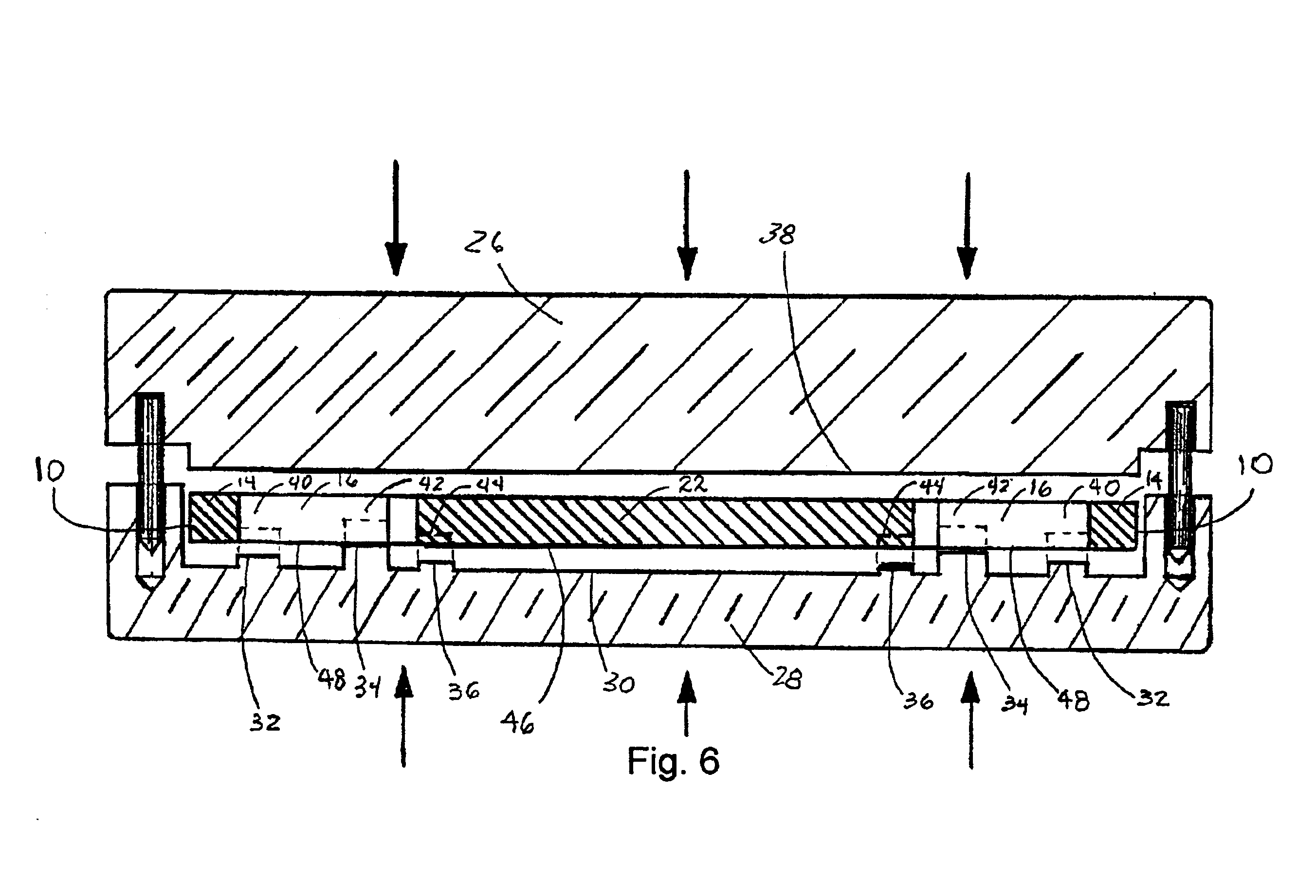Semiconductor package with exposed die pad and body-locking leadframe
- Summary
- Abstract
- Description
- Claims
- Application Information
AI Technical Summary
Benefits of technology
Problems solved by technology
Method used
Image
Examples
Embodiment Construction
FIGS. 1-5 show in plan view the sequential fabrication and partial assembly of one embodiment of the novel leadframe 10 of the present invention. Fabrication of the leadframe begins with the provision of a thin, polygonal plate 12 of a ductile metal (FIG. 1), which is then patterned to form the nascent leadframe 10 (FIG. 2).
In the exemplary square embodiment illustrated in FIG. 1, the plate 12 is about 0.254 millimeters (“mm”) thick, about 4 mm on a side, and made of a copper alloy. Other metals suitable for use in the leadframe 10 include aluminum and iron-nickel (Kovar) alloys.
FIG. 2 is a top plan view of the leadframe 10 patterned from the plate 12 shown in FIG. 1. The leadframe 10 comprises a rectangular frame 14 defined around a periphery of the plate 12; a plurality of leads 16, each having an outer end portion 18 integral with the frame 14 and an inner end portion 20 extending toward a central region of the frame, the center of which is marked by a cross; and, a die pad 22 di...
PUM
 Login to View More
Login to View More Abstract
Description
Claims
Application Information
 Login to View More
Login to View More - R&D
- Intellectual Property
- Life Sciences
- Materials
- Tech Scout
- Unparalleled Data Quality
- Higher Quality Content
- 60% Fewer Hallucinations
Browse by: Latest US Patents, China's latest patents, Technical Efficacy Thesaurus, Application Domain, Technology Topic, Popular Technical Reports.
© 2025 PatSnap. All rights reserved.Legal|Privacy policy|Modern Slavery Act Transparency Statement|Sitemap|About US| Contact US: help@patsnap.com



